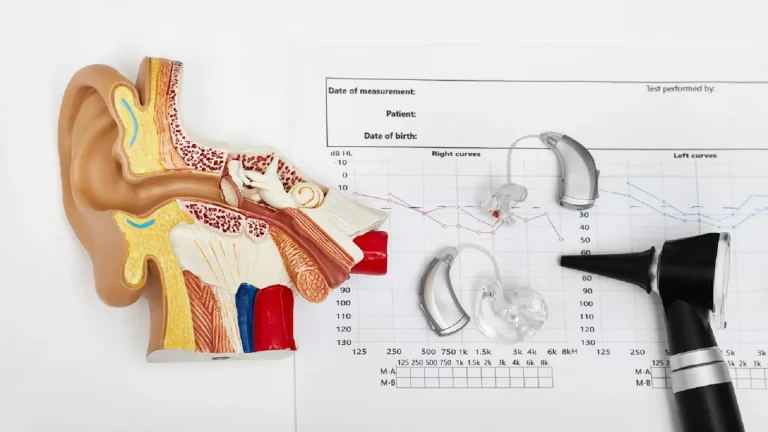Hearing loss affects people differently. Some people hear muffled voices, while others experience pitch issues. How hearing loss is defined can explain these differences and guide treatment. Although clinical, the procedure helps people understand and maintain their hearing.
Professionals use specific systems and criteria to assess hearing loss. These classifications guide treatment and determine what people can hear. Classifying hearing loss, whether mild from aging or severe from accident or disease, is important for finding the right treatment.
The Basics of Hearing Thresholds
Hearing test results are explained in an audiogram. The softest noises a person can hear at different pitch levels are shown in this graph. Decibels (dB) measure what are known as hearing thresholds. If the number is higher, the sound level must be increased for it to be heard.
Hearing is usually normal between 0 and 25 decibels. If a person needs noises to be above 25 dB to understand them, it’s considered hearing loss. Professionals categorize hearing loss severity using this information.
Mild to Moderate Hearing Loss
Mild hearing loss might not affect hearing in quiet places, but still affect it in noisy environments. Those affected might often say others are mumbling or speaking too softly. This may cause miscommunication or necessitate repeated words during conversations. The loss may appear minor on paper, but it can be notable at restaurants and meetings.
Moderate hearing loss creates a clearer barrier. At this level, daily conversations are harder to understand without visual signs or lip-reading. Even with the volume up, the TV may seem quiet, and talking on the phone might be frustrating. People in this range benefit from hearing aids and other listening devices to bridge the gap.
Severe and Profound Hearing Loss
With severe hearing loss, discussions are nearly impossible without amplification. Normal speech and harsh environmental noises like barking dogs may be inaudible. Communication at this level frequently relies on visual or amplified methods.
The most important level is profound hearing loss. Even shouted speech or sirens may not be heard in this range. Sound must be very loud to be heard. With this level of hearing loss, cochlear implants and other communication methods are often needed. Support can help make meaningful relationships and increase sound access despite its severity.
Understanding the Type of Hearing Loss
Hearing loss is categorized by type and severity. Type refers to the aspect of the hearing system that is impacted. The three main types are conductive, sensorineural, and mixed. Conductive hearing loss affects the outer or middle ear. Blockages, fluid buildup, or injury to the eardrum or small bone may prevent sounds from passing through. This may be temporary and improve with surgery or treatment.
Sensorineural hearing loss results from inner ear or brain nerve injury. This is the most common and persistent, and it can be caused by aging, noise, medication, or illness. Mixed hearing loss combines both. It indicates a problem with the conductive and sensorineural systems. Knowing the type helps establish if medical treatment, hearing technology, or both are preferable.
Why Frequency and Pitch Matter
Another piece of hearing classification involves frequency. Some individuals may hear lower-pitched sounds well but struggle with higher pitches like birdsong or children’s voices. Others may lose hearing across all frequencies equally. The audiogram helps visualize these patterns by plotting thresholds across a range of tones from low to high.
These differences alter speech processing. High-pitched consonants like “s,” “f,” and “th” may be the first to become harder to hear. When speech becomes muffled, it is generally a sign of high-frequency hearing loss. Understanding damaged pitches helps adjust treatment and increase hearing comfort.
Taking the Next Step Toward Better Hearing
Hearing loss classification helps explain how hearing works and how to manage changes. Understanding the type and intensity of the loss improves support and communication. Testing provides more than data on a graph; it leads to actual solutions and better lives.
Professional hearing evaluations are recommended for anyone experiencing hearing issues, as even minor adjustments can significantly impact daily life and relationships. Early intervention frequently improves results and strengthens global ties. Contact us to speak to a qualified hearing health professional about your hearing health.


